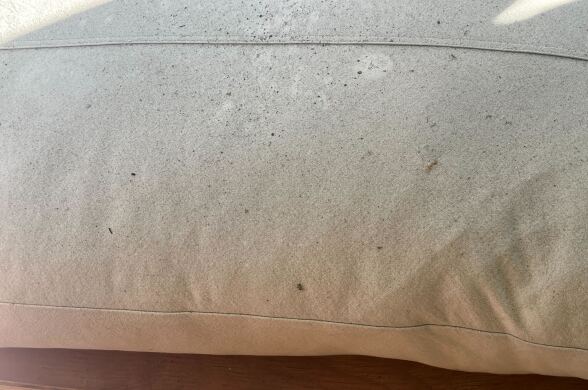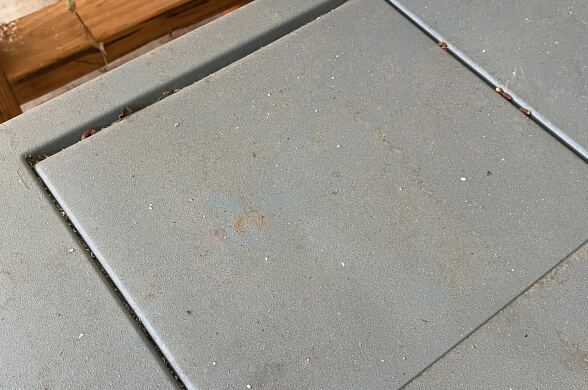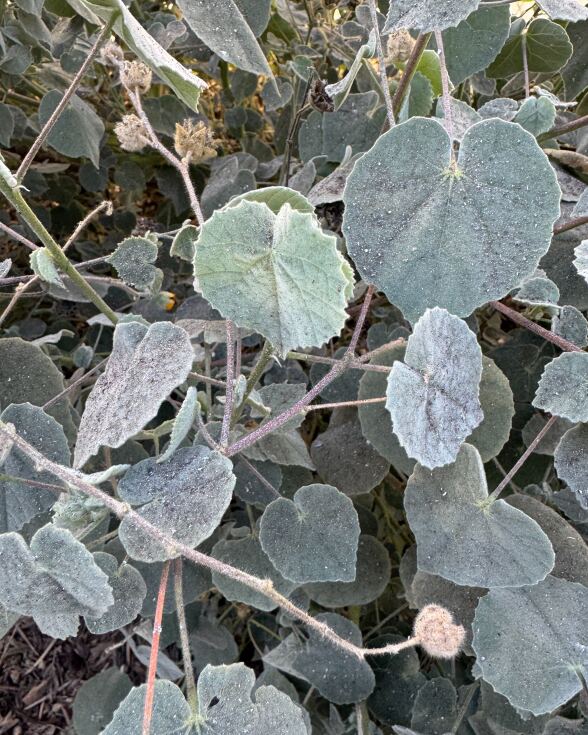Truth matters. Community matters. Your support makes both possible. LAist is one of the few places where news remains independent and free from political and corporate influence. Stand up for truth and for LAist. Make your year-end tax-deductible gift now.
Did LA fires dump ash on your home? Here’s your guide to safely cleaning it up

Many of us have experienced ash raining down on our homes and yards, even if we weren't in the burn areas. It's been no different with the recent spate of L.A.-area fires that have destroyed thousands of homes and buildings, sending little white and grey specks of burned up debris far into surrounding communities. And it’s likely not over — the South Coast AQMD expects more ash to fly around in the coming weeks, especially on windy days.
You may be eager to clean up your home, car and even plants. But it’s important to do it thoughtfully, because ash can contain hazardous materials, like lead, asbestos, and arsenic.
If your home is in the fire zones, ash and debris is cleaned up through a regulated process.
But if you live outside those areas, how you do it is pretty much up to you. Here’s our expert-informed guide to safely removing ash from your property.
What should I wear during ash cleanup?
First off, don’t directly touch ash with your hands. Contact with wet ash may cause chemical burns or irritate your skin, according to the Pasadena Public Health Department.
Instead, wear personal protective equipment:
- Tight-fitting N95 or P100 respirator
- Rubber gloves
- Long sleeve shirt and pants
- Socks and shoes
- Goggles
Remember to remove your shoes before going indoors so it doesn’t track inside your home. If your area is especially ashy, it may be smart to also change your clothes.
How do I clean up ash inside my home?
Scott Epstein, an air quality assessment manager with South Coast AQMD, said the overall goal when you’re cleaning is to avoid stirring up the ash. For ash on the ground, that means:
- Don’t sweep it dry (this will kick it back into the air)
- Instead, lightly mist it and sweep it up or use a vacuum with a HEPA filter (most regular vacuums don't have them; they're specially sold in stores)
“A HEPA filter is designed to capture those particles," Epstein said. "Some vacuums without a HEPA filter, the small particles kind of make it back out into the air. That’s sort of defeating the purpose and actually can make things worse because then you can inhale it again.”
For ash on surfaces, you should:
- Mist it with a spray bottle and wipe it up
- Use enough water so that it sticks to what you're cleaning it with, like a paper towel or rag
- You can also use a damp cloth instead of misting for the same effect
When you’re done, bag it all up and put it in the trash.
What about outside?

For outdoor ash, do not use a leaf blower (those are temporarily prohibited right now in L.A. County anyway).
Epstein said you can use a hose or misting spray to get ash off of things like children’s toys. But just like with indoor sinks, be careful to not let it go down storm drains — it can lead to environmental issues.
“You want to capture it in maybe a bag and then throw it in the garbage,” he said.
Or, he says, you can use your hose to direct it onto your lawn or other areas where it can seep safely into the soil.
“It likely will not damage any plants or vegetation on your property,” Epstein said.
If it’s on your car, it’s best to take it to a commercial car wash to get clean.
What should I do with my garden?
Laura Simpson, a master gardener for the University of California, has a background in immunology. She said rinsing off your plants should be enough to care for them because ash can block the pores on leaves, preventing them from breathing and going through photosynthesis.
Fruits and vegetables from your garden should be fine to eat as long as you wash them, Simpson added.
- Consider rinsing the produce outside and then again in your kitchen
- You can also peel back any leaves or outer layers to ensure you have a fresh base
If you want to go a step further, Simpson said you can mix one cup of white vinegar with nine cups of water in a bowl to wash your food items, and then rinse them again with fresh water.
This is also a use-your-best judgement area — take into consideration how close you are to the fires and how much ash build-up you have.
"If anyone's concerned about contaminants, like heavy metals, you can actually get your soil tested," Simpson said, noting that this applies more to gardens directly in fire zones. But for surrounding areas with ash: "It's probably not going to be a big concern for this situation."
(Note: Ash from these fires also shouldn't be used for composting because of the toxic chemical risk.)
If you have more ash than you're comfortable with, you can consider starting over with your plants and topping it with fresh soil.
For gardens in fire-ridden areas, follow these guidelines from the state health department.
Are my pets safe?
Your pets should be fine as long as you follow a few best practices, such as not letting them hang out nearby while you’re cleaning up ash.
Rachelle Saelor, a senior veterinarian with L.A. County Animal Care, told LAist it’s recommended to keep pets inside until air quality improves.
“If owners are able, they should keep their pets indoors as much as possible and only go outside for potty breaks,” Saelor said.
If you’re in an ashy area:
- Wipe off your pet’s paws before bringing them back inside
- Use things like an alcohol wipe, an unscented baby wipe, or a clean and damp cloth to clean them — they're fine as long as you don’t use them excessively, Saelor said
- Give your pets baths as needed
Ash can irritate a pet's skin, eyes, and lungs, said Joseph Masciana at VCA Los Angeles. You can keep tabs for irritation by watching for things like red skin, closed eyes, and coughing or trouble breathing.
While you're bathing your pet, do what you can to help them avoid ingesting watery ash.
"Pet owners can gently wipe out their pet’s mouth with a clean towel, but I do not advise rinsing out the mouth because the risk of aspiration is high," Masciana said. "I would monitor them for any oral irritation or GI issues — nausea, vomiting, inappetence (lack of appetite)."
_















